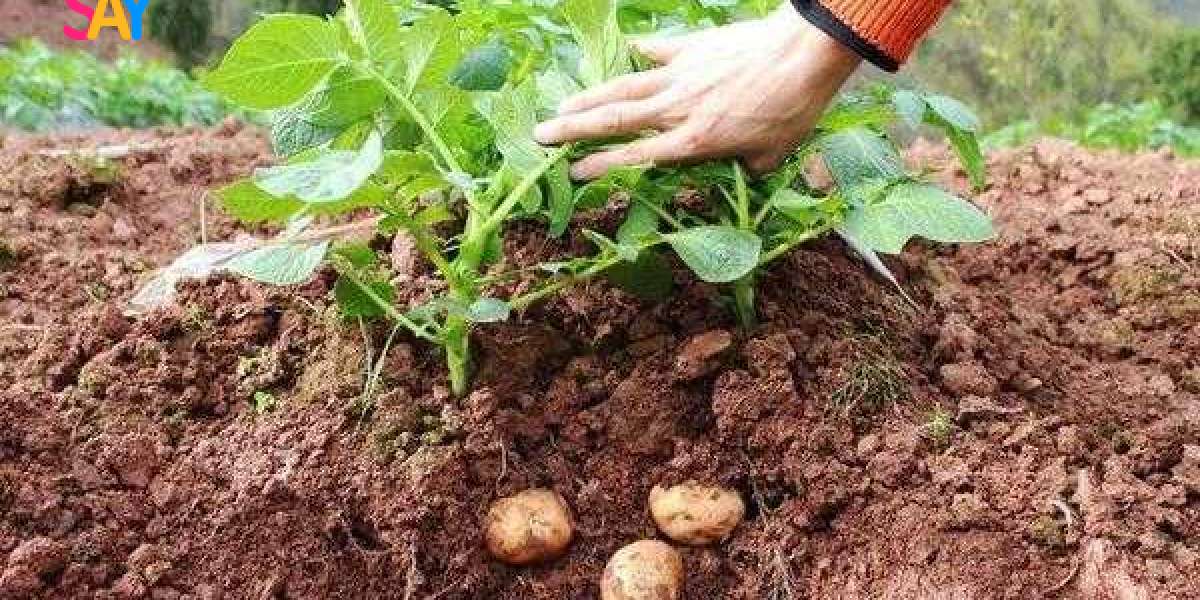I. Virginia's Climate and Soil Conditions
1. Ideal Soil Conditions
Potatoes love a slight acidity, at around a pH of 5.8-6.5, and well-draining, loose soil. Tilled before planting, with any needed amendments worked in. Ensure the tubers have a friendly environment to grow.
2. Soil Moisture and Temperature Levels
Make sure your soil reaches 50 to 65°F before planting. Ensuring your 25 gallon pot soil is not too waterlogged. This will prevent root rot. Maintain moisture during the growing season. This can encourage good sprouting.
II. When to Plant Potatoes in Virginia?
1. Early Spring Planting (March)
Early spring planting allows the plants to mature in cool weather. The potatoes will have better-tasting with a higher dry matter content. However, you should be wary of cold snaps. Protect your sprouting plants from unexpected frosts with coverings.
Kennebec is a popular all-purpose potato. It does well in different conditions and is disease-resistant. Yukon Gold is another favorite with a delicious buttery flavor.
2. Mid-Spring Planting (April)
Mid-spring planting gives your potatoes a head start on a longer, warmer growing season. The plants can establish themselves before the heat of summer, potentially yielding larger tubers.
Chieftain is an excellent choice. It is both heat-tolerant and disease-resistant. Red LaSoda is another option. It can adapt to various soil types and resistance to common scab.
3. Late Spring Planting (May)
The soil is at its warmest when planting in late May. This can encourage rapid growth. However, the risk of disease and pests increases as the season progresses. So attentive garden management is essential. Katahdin is a late-season favorite. It has consistent yields and its tubers suit for long-term storage. Elba has resistance to blight and scab.
III. Factors Influencing Planting Time
1. Soil Temperature and Frost
Planting potatoes in nursery containers too early can cause them to rot. Frost can also damage potato plants, especially the tender new growth.
2. Weather Patterns
Virginia weather can be unpredictable. The temperature changes rapidly. Planting should coincide with a period of stable, warm weather. This will encourage growth without risk of damage.
3. Growing Season and Maturity Period
The growing season in Virginia varies by region. Harvest early varieties about 70 to 90 days after planting. While late varieties will take 100 to 135 days or more. Plant potatoes according to the growing season. Ensuring they have enough time to mature.
IV. How to Grow Potatoes in Virginia?
1. Soil Preparation
Potatoes thrive in well-drained soil with a pH 5.8 to 6.5. Full sun is ideal. Clear the selected area of weeds and any debris. Loosen the soil to at least 8 inches deep.
A broadfork is an excellent tool for this. Compost or well-rotted manure can enrich the soil and improve its structure. Create mounded ridges about six inches high. This provides good drainage and space for the potatoes to grow without crowding.
2. Seed Selection
Your choice of seed potato is crucial. Always purchase certified disease-free seed potatoes from a reliable source. Cut large potatoes into pieces. Each piece should be about 1 to 2 ounces, with at least one or two eyes. These pieces should be left to set out and dry for a day before planting to prevent rotting.
3. Techniques for Growing Potatoes in Virginia
Plant your potato pieces about 3 to 4 inches deep, eyes facing up in rows. The rows should be about 2 to 3 feet apart. This allows space for weeding and harvesting. Spacing between pieces in the row should be 8 to 12 inches.
4. Mulching and Irrigation Practices
To retain moisture and control weeds, use organic mulch like straw. Water the potatoes well immediately after planting. Then, water regularly, about an inch per week. But be careful not to overwater.
5. Common Pests and Diseases
The potatoes are vulnerable to pests and diseases in the first few weeks. For example, potato beetles. Pay attention to any signs of common potato diseases. For example, blight. Remove and destroy affected plants to prevent its spread.
V. Maximizing Potato Yield and Quality
1. Soil Testing and Nutrient Management
Maintaining a regular soil testing schedule, every two to three years. Ensure your potatoes in 20 gallon pots for plants receive the necessary nutrients. You can contact the local Extension office for sample testing kits.
Potassium and phosphorus are particularly crucial for potato growth. So incorporating these into your nutrient management plan is essential.
2. Proper Hilling and Maintenance of Potato Plants
You need to hill potatoes several times during the growing season. This means mounding soil over the base of the plant. Hilling provides the potatoes with deeper and cooler soil to grow in, as well as protect their exposed tubers from sunlight. That can turn them green and produce a bitter taste.
3. Implementing Crop Rotation Strategies
Rotating your crop yearly is vital. Avoid planting potatoes in the same location for at least three years. This reduces the disease organisms lingering in the soil.
4. Harvesting Potatoes at the Right Time
Once the foliage has died back, wait another two weeks before harvesting. The tubers will mature fully and develop a tough skin. This is essential for storage.




